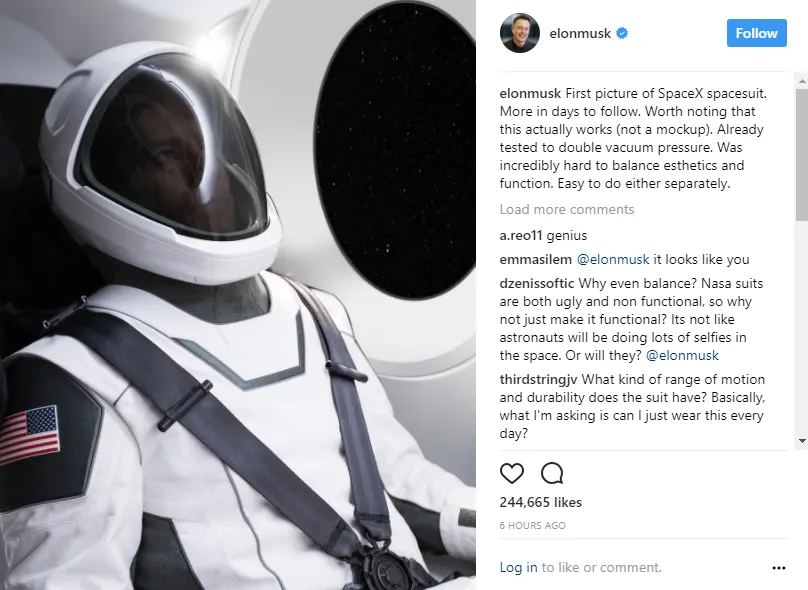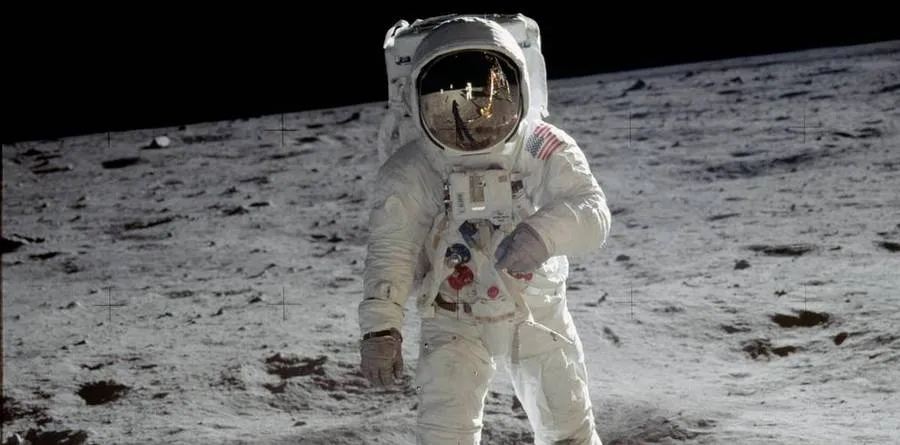SpaceX has already done a lot to establish itself in the commercial space sector. Over the past few years, it has become a number one launch provider of choice for many commercial launches. Musk’s company also became the first commercial company to perform a resupply mission to the International Space Station with its commercial space craft the Dragon capsule in mid-2012. SpaceX also pushed the boundaries of what many thought was possible when successfully landing the first stage of a rocket in late 2016.
However, it is well known that Musk's ambition stretches far beyond earning profits on launch capabilities. Instead, his goals are to help enable humankind to one day settle Mars and expand further into space. That, however, requires a lot more than just a new and more cost efficient mode of transport. Today's unveiling of a SpaceX-made space suit goes to show that Musk intends for his company to do a whole lot more.

Elon Musk shares the first picture of the new SpaceX space suit on Instagram
source
Settling Mars will require innovation in nearly every STEM discipline. Especially in the health sciences. Getting a human to the red planet once is actually feasible already. Sustaining life, however, is an entirely different task, as anyone who has seen the Martian would know. The harsh environment poses many new threats not experienced either on the moon or whilst performing tasks outside the International Space Station. This, in turn, will require new thoughts on how we design life support systems for future missions to the red planet.
Designing a space suit is no simple task. There are many variables that have to be balanced and many concerns that need to be taken. These are also very different depending on where in the solar system you intend to go. The space suits you are used to seeing from images taken of Apollo-astronauts on the Moon or of astronauts performing EVAs (Extravehicular Activity) usually weigh more than a hundred kilos with the oxygen tank. Now, this is no problem while in microgravity or on the surface of the Moon where the gravity is about 16.5% that of Earth, resulting in an effective weight of less than 20 kilos. On Mars, however, gravity is about 38% that of earth, which more than doubles the effective weight relative to the Moon. For an astronaut to be able to function properly, and not be worn down by the weight, a space suit meant for Mars will have to be a whole lot lighter.

Buzz Aldrin on the Moon during the Apollo 11 mission
image credit NASA
But reducing weight has its own trade offs. The space suit needs to provide protection against radiation and harsh weather conditions. It also needs to keep the astronauts warm on a planet whose temperatures can drop below 120 degrees celsius. Solving the issues of vacuum with a tight-sitting suit is also a whole new challenge that would deserve a post of its own.
Anyways, it is great to see new innovations coming out of the private sector that, in whatever way, are helping push the space frontiers. I wish SpaceX the very best of luck, and I am excited to see what further developments they can bring to the sector!